If you’re on the hunt for better ways to boost your rock climbing grip and strength right from the comfort of your own home, pull up balls are an excellent option to consider. These unique training tools offer a more specific and technical approach to finger and grip strengthening, perfectly complementing the exercises you perform on hangboards. With our years of experience climbing and training up our technique, we’ve incorporated pull up balls into our climbing workout routine, and the results have been nothing short of positive. The results are visible. In this article, we’ll share some of the best pull up balls we’ve found on the market.
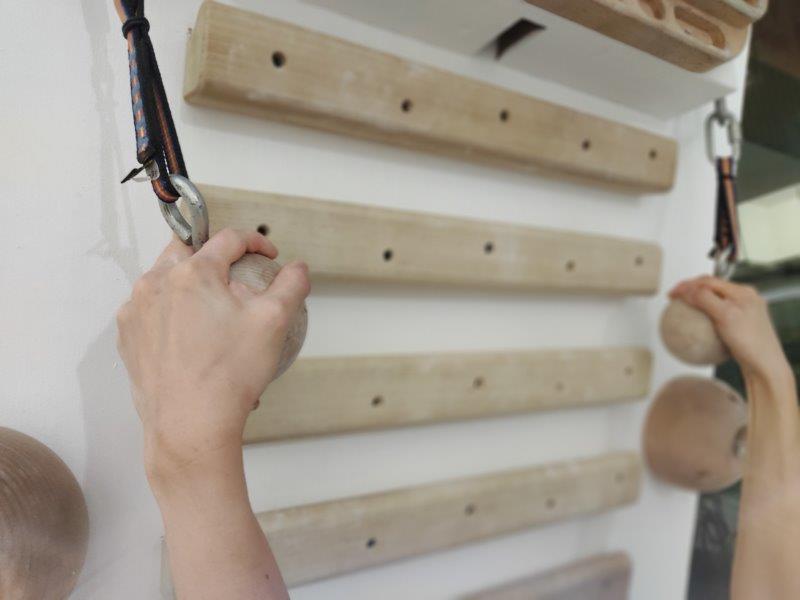
What are the Best Pull Up Balls?
Below you’ll find the list of the top 7 Best Pull Up Balls. We compiled this list from pull up balls we have used, asked others about, and researched further to give you the best possible roundup. With many years of experience with wooden balls for pull up you can be assured that this article will give you what you’re looking for.
We also wrote a buying guide and answered some of the frequently asked questions (FAQs) at the end of this article.
1. ZNCMRR Climbing Pull Up Power Ball Hold Grips
| Specs |
|---|
| Price: 💲 (fewer 💲 = cheaper) Weight: 1.3 pounds (0.59 kg) Material: PU material (grip balls)304 stainless steel (carabiners) Portability: Nylon straps for easy setup on any surfaceSmall, compact and lightweight Size: 2.8 inches |
The ZNCMRR Climbing Pull Up Power Ball Hold Grips are a good addition to your workout regime at the gym or at home when you just don’t have time to scale up a wall or mountain. Nylon straps and sturdy carabiners allow for hassle-free and reliable set-up anywhere. The power balls are suitable for a variety of fitness goals, from low-impact to advanced rock climbing training. They are a useful tool to help improve your grip strength and are durable and strong enough to use on a daily basis. As the balls are 2.8″ (7.2cm) in size, those with smaller hands won’t struggle holding on to them.
A disadvantage of the product is the space that can potentially be created between the ball and the washer when hanging from them. This can cause possible pinching of the skin. We also recommend using chalk to ensure optimum grip surface.
If you’re looking to attain (or maintain!) a strong climbing grip, check out our best grip strengtheners for climbers.
Pros
- Anti-skid design due to spherical grooves
- Diameter size enables usage for big as well as small hands
- Sturdy carabiners
- Affordable
- Durable build
Cons
- Blister prone
- Despite textured surface, they can still be a little slippery
2. YCHLCHL Pull Up Bar,Wooden Strength Training Equipment
| Specs |
|---|
| Price: 💲💲💲💲 (fewer 💲 = cheaper) Weight: 4.56 pounds (2.07 kg) Material: Wood (balls/grips) Portability: Portable and easy to install in different locations Size: L, XL (2.67-3.54 inches) |
YCHLCHL Pull Up Bar,Wooden Strength Training Equipment includes three types of pull up grips: large pull up balls, extra large pull up balls, and pull up sticks. All three grip types are made of high quality wood and are useful for climbers to develop strength and endurance in their back muscles, biceps, forearms, and finger tendons. The grips are easy to attach to pull up bars, then remove once the workout is done.
The only major downside to YCHLCHL Wooden Strength Training Equipment is that the wooden surfaces are smooth, making it easy to slip, especially if your hands get sweaty during a workout. We advise using gym chalk and climbing chalk to reduce slipping hazards when using this pull up equipment.
Pros
- Durable wooden construction
- Can be easily attached to and removed from pull up bars
- Balls and grips can support up to 300 pounds
- Good size for comfortable grip
Cons
- Surface is not textured, making it easy for climbers to slip when not using chalk
- No protective finish making them unsuitable for leaving hung outdoors
3. FITactic Solid Training Cannonball Bomb Power Pull Up Ball Hold Grips
| Specs |
|---|
| Price: 💲 (fewer 💲 = cheaper) Weight: 1.3 pounds (0.59 kg) Material: Composite resin material balls, 304 stainless steel carabiners and nylon webbed straps Portability: Velcro straps for easy setup anywhere Size: 3 inches |
The FITactic Solid Training Cannonball Bomb Power Pull up Ball Hold Grips are a useful addition to your workout regime if what you’re looking for is to improve your grip, core and upper body strength. The design allows for multiple movements in one single set due to the possibility of positioning your hand at different angles on the ball; this allows for easy and quick transition from one exercise to another. They come in 3 sizes (3, 3.5 and 4 inch) and are also available in red.
Set-up is quick and straightforward through the use of velcro straps that allow for easy attachment on different surfaces. Balls weigh in at 1 pound each (450 grams), hence aren’t heavy to carry around.
A big downside to this product is its smoothness which can be slippery, especially for beginner users.If you are only starting to work on your grip, we have a dedicated article on best hand strengtheners for beginners.
Pros
- Easy to assemble and attach
- Can be used as a rehabilitation tool after a hand injury
- Won’t break the bank
- Material offers excellent grip
Cons
- Balls aren’t textured; smoothness can cause possible slipping
- Limited sizes available; smaller hands may experience difficulty holding on to the ball
4. Seleware Pull Up Power Ball Hold Grips
| Specs |
|---|
| Price: 💲💲 (fewer 💲 = cheaper) Weight: 1.96 pounds (0.89 kg) Material: High-quality plastic (power balls)Stainless steel anti-rust SUS 304 (carabiners) Portability: Small, compact and lightweightStraightforward installation Size: 2.55 inches |
The Seleware Pull Up PowerBall Hold Grips are smaller than most other power balls and measure in at a diameter of 2.55″ (6.5cm). They are comfortable to hold; their size paired with the grooves etched into the balls ensure your hands don’t slip. This makes them ideal for grip, finger and forearm training at home, where you can also choose to carry extra weight on your back/ attach weights to your ankles for more resistance and intense strength workout.
Despite the advantages, the Seleware PowerBall straps are much longer than most. In comparison to other straps and carabiners, these have a hanging strap length of 31.5″ (80cm). This can be a nuisance when having to attach and detach the straps from a surface. Additionally, if you’d like to shorten the straps, manual adjustment may need to be done: you will need to modify the straps’ length yourself which can result into one strap possibly being longer than the other and consequently one power ball to hang higher/lower than the other, affecting the quality of your workout.
Pros
- Non-slip due to etched-in grooves
- Easy installation
- Durable
- Small diameter size for comfortable grip
- Value for money
- Load up to 1000 pounds
Cons
- Straps are quite long; takes longer to attach to and remove from the bar
- Long straps may result in uneven set up and ball suspension
5. Letsgood Climbing Pull Up Power Ball Hold Grips
| Specs |
|---|
| Price: 💲💲💲 (fewer 💲 = cheaper) Material: Plastic (balls), Nylon (straps), Stainless Steel (hooks) Portability: Portable and easy to install in different locations Size: 3.1 inches |
Letsgood Climbing Pull Up Power Ball Hold Grips are affordable pull up balls ideal for novices and lighter individuals. The textured grips are great for developing grip strength while reducing the risk of slippage. The balls are portable, and can easily be installed on a pull up bar at a climbing, fitness, or home gym, then removed when you are done with your workout.
Although the manufacturer states that they can support up to 330 pounds, we would advise these balls only for lighter-weight users under 150 pounds. The composition is not as sturdy as other comparable items, and the balls may crack or split when put under constant heavy weight.
Overall, we recommend Letsgood Climbing Pull Up Power Ball Hold Grips for climbers and exercise enthusiasts that want to try using pull up balls but do not want to spend more money on higher tier items yet.
Pros
- Can support 330 pounds
- Textured grip to avoid slippage
- Relative low price
- Size offers comfortable grip
Cons
- Balls can peel apart after extended use
- Balls are not solidly composed and can be damaged if gripped too hard
6. FitBar Ball Grips for Strength Training
| Specs |
|---|
| Price: 💲💲💲💲 (fewer 💲 = cheaper) Material: Molded thermoplastic (balls) Portability: Portable and simple to install and remove after usage Size: 3 inches |
FitBar Ball Grips are simple pull up balls that can be easily added to a pull up bar at a climbing, fitness, or home gym. The balls are made of molded thermoplastic with embedded textures, making them easy to grip and ideal for novices and experts alike. We still advise using gym or climbing chalk to maintain a better grip on the pull up balls, particularly if your hands get sweaty during long workouts.
The downside to the FitBar Ball Grips is that they use open hooks rather than latching hooks or clamps. The pull up balls also do not come with straps. This causes the potential hazard of the balls slipping from the pull up bar or other equipment that they are attached to. We strongly advise using a crash pad when exercising with FitBar Ball Grips.
Pros
- Can support up to 300 pounds
- Textured surface for easy grip
- Versatile
- Durable and simple build
Cons
- Hook does not latch to bar
- Does not come packaged with straps
7. Logest Climbing Pull Up Power Ball Set with Strap
| Specs |
|---|
| Price: 💲💲 (fewer 💲 = cheaper) Weight: 1.61 pounds (0.73 kg) Material: Polyurethane (balls) Portability: Portable and simple to install and remove after usage Size: 2.8 inches |
Logest Climbing Pull Up Power Balls are affordable pull up balls that are easy to install in a home gym or for use in a climbing gym or fitness gym. They even come with a carrying bag for convenient portability, and they can be packed up when you are done with your workout. The pull up balls are textured with concave dimples on their surfaces, making them easier to grip. However, users with smaller hands may find them challenging to hold on to. Unfortunately, they only come in one size, there is no smaller option for people with small hands that want to try this product. Despite this shortcoming, Logest Climbing Pull Up Power Balls are priced lower than other comparable products, making them suitable for novices that want to try pull up ball workouts without forking over too much money to do so.
Pros
- Textured surface makes them easy to grip
- Low price compared to other similar products
- Comes with carrying bag
- Lightweight for easy portability
Cons
- May be difficult to grip for users with small hands
- No smaller sizes are available
Verdict
Based on all of our experience with wooden balls for pull up, we found that ZNCMRR Climbing Pull Up Power Ball Hold Grips is the best pull up ball available today.
Our Premium Option is YCHLCHL Pull Up Bar,Wooden Strength Training Equipment with all the best features and high-quality materials, but that’s only if you have more money to spend.
However, if you are on a slightly tighter budget, you can also consider the FITactic Solid Training Cannonball Bomb Power Pull Up Ball Hold Grips as an affordable alternative.
Our other reviews you may find useful in your research:
What You Should Know Before Buying pull up balls
Advantages and Benefits
Pull up ball training can be more beneficial for climbers compared to traditional pull ups using a pull up bar. While all pull ups and their variations target the back muscles, biceps, and core, pull up balls engage the forearms, hand muscles, and tendons in the fingers as well, which are all vital to develop for climbing grip strength. Pull ups and chin ups using pull up balls force users to focus on their grip more so than traditional pull up bars, increasing engagement of the forearms, hands, and wrists.
Pull up balls are also versatile and take up little space in a home gym. They can be hung from existing pull up bars, or hung directly from the ceiling using eye loops.
Things to Look Out for that Differentiate
The primary differentiating factors between different sets of pull up balls are grip texture and composition material. Pull up balls can be composed of polyurethane, wood, metal, or other composite materials. We advise beginners to use polyurethane pull up balls since their surfaces tend to be less slippery than wood or metal pull up balls. Textured grips on pull up balls will also make them easier to hold on to, preventing slips and falls.
We also urge climbers to pay attention to the size of their pull up balls. Climbers with smaller hands are best suited purchasing pull up balls with a smaller diameter, as larger balls may be difficult to grip.
Setup & Training Usage
Pull up ball setup is straightforward and fast. Most models can be hung from the ceiling, from support beams, or pull up bars, making them ideal for a home gym or as supplementary equipment that can be brought to a fitness or climbing gym. When finished, the pull up balls can be unhooked or unstrapped, then stored away.
Pull up balls can be used to perform any of the exercises that can be performed on pull up bars, such as dead hangs, hanging leg raises, and of course, pull ups and chin ups with various grip widths. Compared to pull up bars, pull up ball exercises are more engaging of the forearm and hand muscles as well as finger tendons.
Precautions to take note of
As with all exercises, we advise that you stretch before performing exercises with your pull up balls to avoid injury. Keep in mind that due to their size and higher engagement of hand muscles, some climbers may find it easier to slip when using them compared to traditional pull up bars. For this reason, we advise beginners to use chalk to assist with gripping the pull up balls, or ensure that they purchase balls with textured grips. Having a spotter can also reduce the chances of falling, and a spotter can help support your body weight while you get used to using the pull up balls. Finally, a good crash pad should be placed under your workout area to prevent injury should you slip and fall.
Questions and Answers About pull up balls
How do I choose the best pull-up balls?
When choosing pull up balls, the most important factors are versatility, material, and price. The most versatile pull up balls can be hung from a pull up bar at a fitness gym or home gym, then removed when finished. For safety purposes, we advise purchasing pull up balls that can be clamped rather than those with open hooks to prevent falling hazards. We recommend novices to use pull up balls with textured grips or those made of polyurethane to avoid slippage. Most pull up balls range from $20 to $60, with the average price range being $30 to $40 for quality pull up balls.
Do pull-ups help with climbing?
Performing pull-ups can indeed support your climbing activities! Not only do these exercises build endurance, but they enhance strength in your arms, shoulders, and back. Pull-ups also aid in refining lock-off strength, facilitating better control while climbing. However, remember that mastering climbing involves a diverse array of training, including honing your leg and footwork techniques. Looking to acquire a pull-up bar? Check out my review of the top 10 rock climbing pull-up bars here.
What muscle does each pull-up grip works?
The pull up is a classic bodyweight exercise used to develop upper-body strength and works on many muscles. Pull-ups mainly work the back muscles, such as the latissimus dorsi and rhomboids, along with the biceps. Depending on the grip being used, other muscle groups can be engaged. For instance, narrow-grip pull ups recruit the pectoral muscles, while wide-grip pull ups engage the upper lats. We advise beginners to use a narrow grip, since the chest muscles will take some of the burden off of the back muscles, but those with intermediate and above levels of fitness, or those that want to specifically target the lats, are advised to use wide grips. Wide and narrow grip pull ups can be performed on traditional pull up bars as well as pull up balls, which are portable and easy to adjust when attaching to pull up bars.

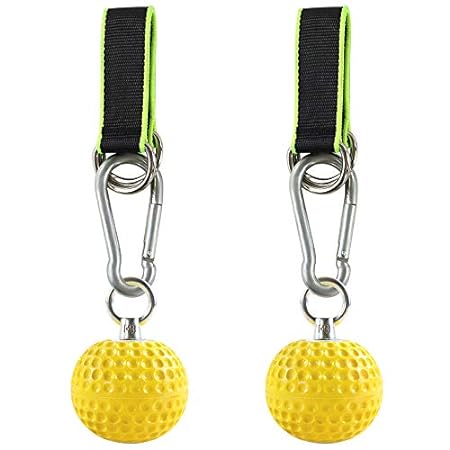
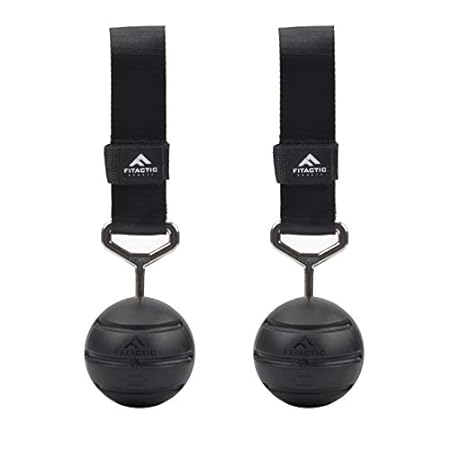
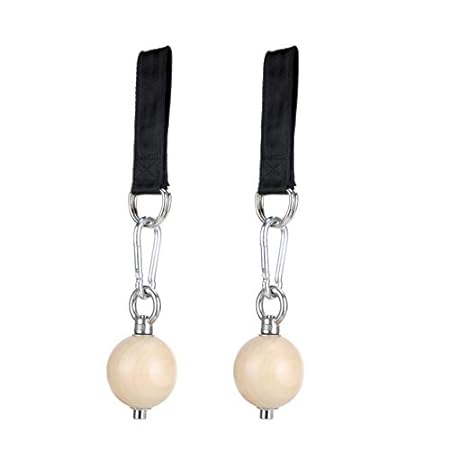

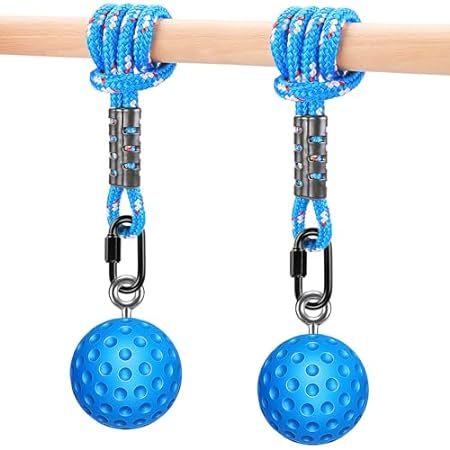

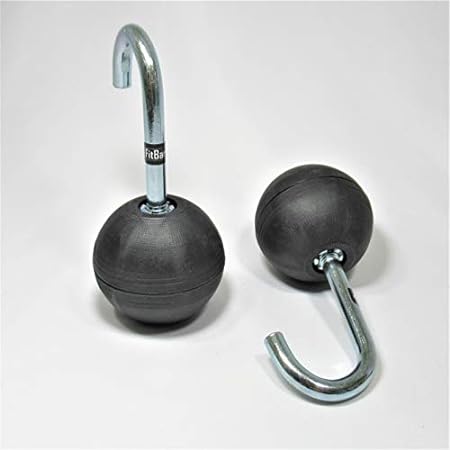
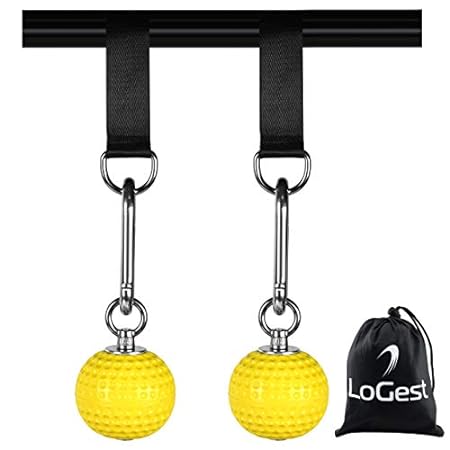



No Comments